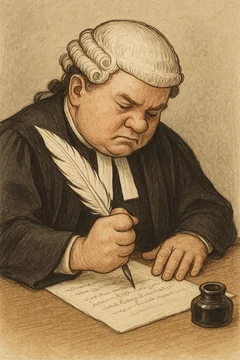If you ask the defendant, pretty much every complaint should be dismissed on half a dozen grounds, from § 101, to lack of detail, to poor penmanship.

The rules being what they are, you only have 20 pages for a motion to dismiss and so you may be tempted to just leave out the penmanship thing to make room for your better motions.
Under 12(g)(2), however, you only get the one motion to dismiss:
a party that makes a motion under this rule must not make another motion under this rule raising a defense or objection that was available to the party but omitted from its earlier motion.
So you've got to wait for a 12(c) motion or SJ for your ham-handed opponents to get what they've got coming to them. That's just how it goes.
But what happens if, after you file your motion, the plaintiff amends shoring up the issues you briefed, but maintaining the same woefully deficient script. Can you now move to dismiss on that issue, now that your prior grounds are a bit shakier?
No, no you can't.
That was the holding in OpenTV, Inc. v. Pinterest, Inc., C.A. No. 24-1301-JCG (D. Del. July 16, 2025). Pinterest had moved to dismiss the complaint on a Raindance-esque grounds that the complaint failed to contain sufficient detail about how their product allegedly infringed. Rather than file an opposition brief, Plaintiff responded by amending its complaint to add more than 50 pages of detail on how Pinterest's product infringed.
Pinterest then filed another 12(b)(6) motion arguing that several patents-in-suit were invalid under 101 -- a theory not incuded in the earlier briefing.
Judge Choe-Groves held that this theory was waived under 12(g)(2) and denied the motion to dismiss:
Pinterest’s First Motion to Dismiss was expressly brought under Rule 12 and argued only that OpenTV failed to plausibly plead any theory of infringement of the Patents. The motion did not raise the issue of patent eligibility under § 101. Because Defendant’s First Motion to Dismiss failed to raise patent eligibility, the defense can only be raised in the Second Motion to Dismiss if the motion qualifies for an exception under Rule 12(h)(2) or (3) . . . .
Because Pinterest’s Second Motion to Dismiss does not cite any new allegations from the Amended Complaint, Pinterest was in a position to challenge patent eligibility when it filed the First Motion to Dismiss and failed to do so.
Id. at 5-6 (internal citations omitted).
Notably, the Court rejected the argument that denying the motion on these grounds was inefficient because it could simply be re-reaised as a motion for judgment on the pleadings:
The Third Circuit Court of Appeals is clear that trial courts should favor application of Rule 12(g)(2), even when the interest of judicial efficiency might hint at the opposite approach. Considering the guidance of the Third Circuit Court of Appeals and the plain language of Rule 12(g)(2), the Court is not inclined to permit successive motions to dismiss.
Pursuant to Rule 12(g)(2), the Court concludes that Pinterest waived its patent eligibility arguments. Pinterest’s Second Motion to Dismiss is denied without prejudice and Pinterest may refile its patent eligibility arguments in a different pleading allowed by Rule 12(h)(2).
Id. at 8.
If you enjoyed this post, consider subscribing to receive free e-mail updates about new posts.

